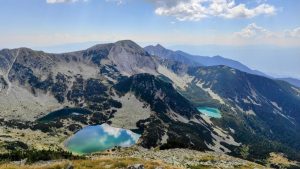Historic Centre of Siena
A picturesque and completely intact medieval walled city dating from the 12th-15th centuries.

A picturesque and completely intact medieval walled city dating from the 12th-15th centuries.

A remote group of Polynesian islands with wonderfully diverse and unique ecosystems on land and in the sea.

A former island, now land-locked, that illustrates the battle that the people of the Netherlands have fought against the sea over many centuries.

A massive and scientifically important underground cave system known for its beauty.

Four 19-century palaces in the Romantic and eclectic style, set in stunning natural landscapes.

An artists’ colony used for experimentation in architecture, arts and design at the turn of the 20th century.

A royal hunting park planned according to geometric principles in order to emphasize the absolute power of the monarchy.

A former shale-oil mine that contains a wealth of remarkably well-preserved fossils from a 47-million-year-old Eocene ecosystem.

A church complex that is home to The Last Supper, a 15th-century fresco by Leonardo da Vinci.

A beautiful region along the Ligurian coast where, over centuries, people adapted to and changed the dramatic natural landscape.

Nine mountains, each one a pilgrimage destination containing a series of richly-decorated Medieval or early-Renaissance chapels.

A well-preserved 1st-century Roman theater and a triumphal arch nearby with unique bas-relief images.

An unusual 18th-century church that combines Baroque and Gothic styles with symbolism around the number 5.

An intact fortified medieval town built by Transylvanian Saxons.

An innovative cathedral with architecture that foreshadowed Gothic, and the 11th-century Norman castle that guarded it and the northern frontier.

An ancient city on a peninsula containing architecture from many eras, including unique Bulgarian Renaissance elements.

A mountain on whose peak stands the tomb of King Antiochus I, an imposing artistic achievement of the Hellenistic period.

The extensive ruins – palaces, churches, mosques, fortifications, and homes – of an important trading city on the medieval Silk Road, where diverse cultures and architectural traditions met and blended.

A 19th-century company town built to provide a good standard of living for employees of a cotton mill.

A long limestone cliff containing an exceptional fossil record of life on Earth both before and after the asteroid impact that wiped out the dinosaurs.

Seventy-eight locations along four medieval pilgrimage routes leading to the Santiago de Compostela in Spain.

Primeval forests of European beech trees that survived the last Ice Age and then spread across Europe, now protected in 93 locations across 18 countries.

A mountainous region of Mallorca with ancient systems of water harvesting, terraces and villages that have supported agriculture for centuries.

A hilly region with 16 villages and what remains of a huge Roman-era gold mining operation.

A group of Medieval buildings in Spain that exemplify a fusion of Islamic and Christian architectural and artistic traditions.

A chain of survey points from Norway to Ukraine set up in the 19th century to study the curvature of the Earth.

A cantilever bridge dating to 1890 that is celebrated for its innovative design.

Two 11th-century churches exemplifying Ottonian Romanesque architecture and art.

A mountainous reserve known for the beauty of its landscapes and rich biodiversity.

A well-preserved medieval city with complete fortifications, built largely by Crusaders, with elements of Gothic, Byzantine and Ottoman architecture as well.

Sicilian landmarks that showcase a blend of Arab, Norman and Byzantine influences in art and architecture.

12 sites designed for Louis XIV by the innovative military engineer Sebastien de Vauban in the late 17th-18th centuries.

A collection of shelters used by prehistoric people, many containing impressive Paleolithic works of art.

The oldest known intact lighthouse in the world, built by the Romans in the 1st century AD.

A railway route through the Swiss Alps that represents an outstanding early-20th-century engineering and architectural achievement.

An important coal mining and iron production region in the Industrial Revolution.